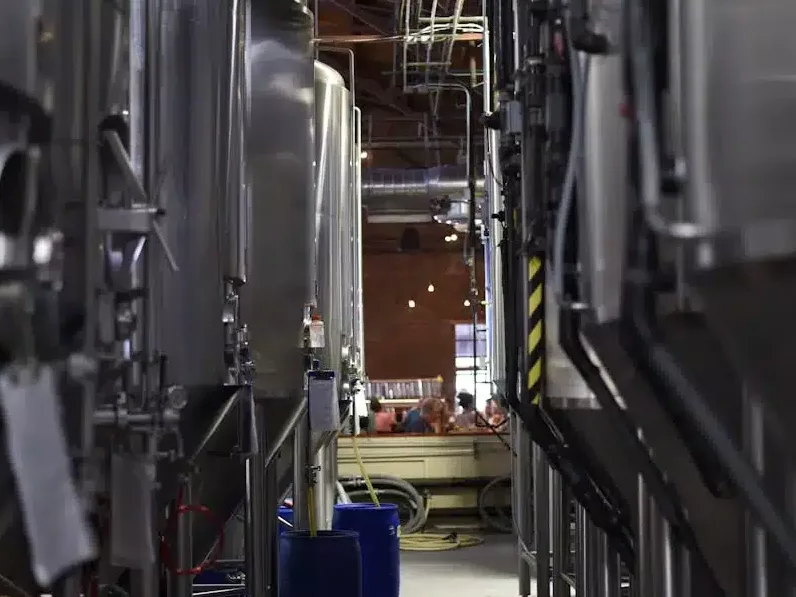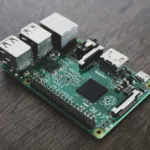
Introduction
In the ever-evolving landscape of Industry 4.0, the integration of advanced technologies is not just a trend but a necessity for staying competitive. Among these technologies, Autonomous Mobile Robots (AMRs)––elegant robotic vehicles, stand out for their flexibility, intelligence, and efficiency. Incorporating these mobile robots offers dynamic solutions for multiple operations, including but not limited to material handling, logistics, process automation, and reshaping global factories. This article discusses how an AMR Integration into Industry 4.0 operations can enhance productivity, safety, and operational efficiency.
A Brief Introduction to AMRs
AMRs are self-guided robotic systems that integrate components like sensors, cameras, and advanced algorithms, enabling them to navigate and perform tasks autonomously in dynamic environments. These robots can operate without direct human intervention; however, they can receive commands or instructions from human operators. Unlike traditional automated guided vehicles (AGVs) that rely on fixed paths or infrastructure, AMRs use onboard intelligence to adapt to changing surroundings, making them ideal for various domains, such as modern manufacturing facilities and warehouses.
Understanding AMRs in the Context of Industry 4.0
AMRs, a cornerstone of the Industry 4.0 revolution, drive significant improvements in efficiency, flexibility, safety, and intelligence in industrial operations. Industry 4.0, characterised by the digital transformation of manufacturing and supply chain processes, relies heavily on cyber-physical systems, the IoT, artificial intelligence (AI), and robotics. AMRs, with their advanced sensors, AI algorithms, and autonomous navigation capabilities, epitomise the fusion of these technologies, making them highly adaptable to changing operational needs.
Key Benefits of Integrating AMRs in Industry 4.0 Operations
AMRs can optimise industry 4.0 operations in many ways by providing unparalleled benefits in terms of:
- Safety and Ergonomics
Automating routine or hazardous tasks with AMRs reduces accidents and injuries caused by human error, improving overall workplace safety. By taking over physically demanding tasks, AMRs can reduce worker fatigue and potential injuries, leading to a healthier and more satisfied workforce.
- Enhanced Flexibility and Scalability
AMRs offer unparalleled flexibility in deployment and can be adopted for varied tasks and environments. This adaptability allows industries to scale operations up or down based on demand without significant reconfiguration costs.
- Increased Efficiency and Productivity
By automating routine or hazardous tasks, AMRs free human workers, thus allowing them to focus on more value-added activities. This boosts productivity and improves job satisfaction.
- Improved Accuracy and Reduced Downtime
Equipped with sophisticated sensors and AI, AMRs minimise errors in material handling and inventory management. Their predictive maintenance capabilities can foresee and mitigate potential failures, reducing downtime.
Strategies for Integrating AMRs into Industry 4.0 Operations
Incorporating AMRs into bespoke industry operations requires careful planning and consideration to ensure seamless implementation and maximum efficiency. Some key strategies include:
- Assessing Operational Needs and Readiness
The first step involves a brief assessment of operational processes to identify areas where AMRs can deliver the most value. This analysis should consider current bottlenecks, safety concerns, and potential ROI.
- Designing AMR-Ready Infrastructure
For optimal integration, facilities may need modifications to accommodate AMRs. This includes ensuring suitable floor conditions, adequate space for navigation, and integrating IoT sensors for seamless communication between AMRs and other systems.
- Ensuring Interoperability and Data Integration
AMRs should seamlessly integrate with existing enterprise resource planning systems, manufacturing execution systems, and other digital platforms. This requires standardised communication protocols and data formats to ensure interoperability and real-time data exchange.
- Focusing on Workforce Training and Change Management
The successful integration of AMRs involves not just technological upgrades but also a cultural shift. Training programs aimed at upskilling employees and clear communication about the benefits of AMRs can facilitate smoother adoption.
- Prioritising Safety and Ethical Considerations
Safety protocols must evolve to address the unique challenges posed by human-robot collaboration. Ethical considerations, including job displacement concerns, should be proactively managed through retraining and redeployment strategies.
Versatile Applications of AMRs: Exploring Their Success Stories
AMRs are explicitly designed to understand and interpret their surroundings and efficiently carry out their duties in a wide range of sectors, including:
- Warehouse and Inventory Management: AMRs are widely used in warehouses to transport goods, manage inventory, and perform stock-taking tasks, significantly improving efficiency and reducing human error.
- Manufacturing: In manufacturing environments, AMRs can transport materials between production stations, deliver parts, and assist in assembly processes, thereby optimising the production workflow.
- Healthcare: Hospitals and healthcare facilities use AMRs to transport medications, laboratory specimens, and even meals, reducing staff workload and increasing operational efficiency.
- Retail: Some retail environments deploy AMRs to manage inventory, guide customers, and even deliver products directly to customers’ vehicles.
Future Trends in AMR Integration
Looking ahead, the inclusion of AMRs in Industry 4.0 operations will likely focus on enhanced AI capabilities. These capabilities will allow for more complex decision-making, improved human-robot interaction for collaborative tasks, and greater standardisation for interoperability. The convergence of AMRs with other cutting-edge technologies like 5G, edge computing, and blockchain could unlock new levels of efficiency, transparency, and agility in industrial operations.
Takeaway
The efficient integration of AMRs into Industry 4.0 operations presents a transformative opportunity for industries to enhance their productivity, flexibility, and competitiveness. By adopting a strategic approach comprising technological, organisational, and ethical dimensions, businesses can fully leverage the potential of AMRs to meet the challenges of the digital age. The future will undoubtedly witness evolution in more advanced AMR technologies and their integration strategies, shaping the future of Industry 4.0.





















